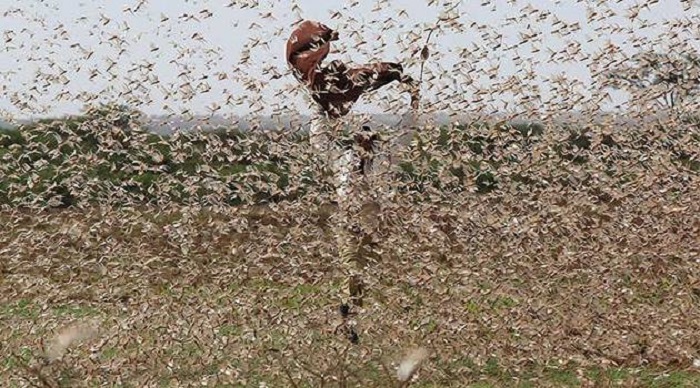East Africa is under threat of unyielding locust
invasion. This seems to be the case after reports have been made about billions of desert locusts which have been swarming
across eastern Africa
in the recent weeks. The countries that are heavily affected are
Kenya, Somalia, and Ethiopia.
However, experts warn that the locusts are
likely to spread further.
The swarms are massive; one of the largest in Kenya is about 37 miles long and 25 miles wide. The swarms, which are dense enough at times to block out the sun, are the worst to hit Ethiopia and Somalia in 25 years, and the worst in Kenya in 70 years.
Desert locusts eat all the vegetation they encounter, with the consumption rate of an amount equal to their body weight each day. Each square kilometer of swarm can include 40 to 80 million locusts and eat as much food as 35,000 people, according to the United Nations’ Food and Agriculture Organization (FAO).
In addition to destroying crops in a region where nearly 20 million people face food insecurity, swarms also consume the vegetation on cattle grazing land in a matter of hours. To manage the insects, Kenya and Ethiopia are spraying pesticides from airplanes. The countries have about five planes each, but as the locusts spread, there are more of them than the local systems can handle.
According to the local agriculture officer in Kenya’s Isiolo county-one of the affected areas-they have managed to decimate around five swarms in Samburu and Isiolo. He however adds that the current measures are no match for the reproductive rate of these insects.
Aerial pesticide spraying is the only effective way to combat desert locust swarms, according to the FAO, which is seeking US $70m in aid to support additional efforts to contain the pests.
The swarms have been attributed to cyclones that rained on the deserts of Oman last year. Furthermore, the recent increase in cyclone frequency in the Indian Ocean could be to blame, according to FAO officials.
The next rainy season in Eastern Africa is set to begin in the next month, bringing with it a new wave of vegetation growth and locust breeding. Female locusts only lay their eggs when the ground is damp. While swarming, which is also called their “gregarious” phase, the locusts lay egg pods of about 80 eggs that usually hatch within two weeks. Factoring in hatching and survival rates, each pod leads to about 16 to 20 adult locusts, which mature in two to four months and start the cycle again.
By the time the weather dries up again in June, the FAO estimates that the current population of desert locusts could multiply by a factor of 500. The swarms have already entered Ethiopia’s Rift Valley, according to the FAO’s most recent report, and they are approaching Uganda and South Sudan.
Meanwhile, in Uganda, which neighbours Kenya to the West, the government has set aside US $4Bn to support the Ministry of Agriculture in efforts to prevent the invasion of the locusts. Furthermore, the public was urged to stock up on food reserves as a precautionary measure.









